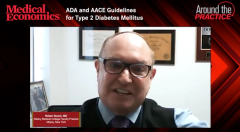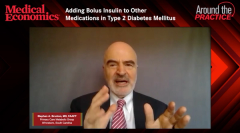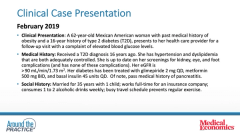
Dosing insulin in Type 2 Diabetes Mellitus
Episodes in this series

Dhiren Patel, PharmD, CDE, BC-ADM, BCACP: Dr Busch, you mentioned as you’re starting it. Are you doing weight-based dosing? Talk to me about how you’re starting it because I know that, in our institution [Veterans Affairs Boston Healthcare System], some are comfortable with that 10-unit dosage. Unfortunately, the patient may end up on 10 units for too long. Weight-based dosing vs starting with units because that’s what you’re comfortable with. What’s your message there?
Robert Busch, MD: Personally, if it’s the thinner obese patient, then I’ll do 10 units. If it’s a more obese patient, I’ll do 20 units. Very importantly, they have my cell phone number, and that’s my player of the week. I enjoy playing educator, so I can tune-up their fasting sugar without overbasalizing them. I find that rewarding because it establishes your relationship with the patients. I get to play family doctor. Then because of that relationship with a patient initiating insulin, titrating it, and getting their fasting to goal, that’s a fun thing to do as a caregiver as well.
Some of my partners may think thank I’m nuts giving my cell phone number to the patient, but I do that. I do it with all my patients, but particularly someone on insulin. I feel that they have to have access.
Dhiren Patel, PharmD, CDE, BC-ADM, BCACP: That makes sense. Dr Brunton, do you see the same? What are most folks doing there? Is it still what we’ve been taught: Start at 10 units, then go up from there?
Stephen A. Brunton, MD, FAAFP: I think so. I’m going to get your phone number after this, Bob, so I can call you day and night as well. With the education in primary care, they tried to make it easier when we first got access to basal insulin. With the 10 units, people don’t get into trouble, and you can go from there.
I use a different titration schedule from what Bob uses, but there are a lot of patients for whom we don’t have adequate numeracy. We used to go with averages over 3 days, but nobody can do that. I do something like a 1-0-1 thing. If they’re high, then they add 1 unit. If they’re low, then they subtract 1 unit. If they’re in the middle, then it’s 0. Most patients can get that with self-titration, but starting at that 10-unit point is easier.
When you have very obese patients, which sometimes happens, I would normally do what Bob does: maybe 20 or 15 units. It’s simple; that’s what makes it easy for us. Once again, we’re then working with the patient and getting them back. As Diana says, get them back sooner rather than later. You can’t start someone on insulin and say, “I’ll see you in 3 months.” They need to be seen in a short period of time.
Dhiren Patel, PharmD, CDE, BC-ADM, BCACP: Sure.
Diana Isaacs, PharmD, BCPS, BCACP, BC-ADM, CDCES: Yeah.
Robert Busch, MD: Maybe our younger colleagues are too young to remember this, but when Sanofi came out with basal insulin, there was a push for primary care to adopt basal insulin. They said to go up a unit every night until the patient was under 100: 1-1-1. It’s just what Stephen said: Go up a unit every night until you’re under 100. That was an easy way to teach, but some of these patients overbasalized, and they were on 80 units and were still high in the daytime and raised it. They have to know to raise it based on their wake-up reading, not based on their reading right after a meal or something.
Diana Isaacs, PharmD, BCPS, BCACP, BC-ADM, CDCES: One of the things we try to do is a quick virtual follow-up because it’s so easy now to do virtual visits. We’ll start someone on insulin, set up a virtual visit 1 week later, and then we can review. That way, for people with lower numeracy, we can help them with that titration.
Newsletter
Stay informed and empowered with Medical Economics enewsletter, delivering expert insights, financial strategies, practice management tips and technology trends — tailored for today’s physicians.

















